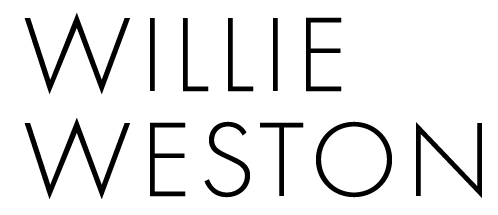Shirley Macnamara
Portrait of Shirley Macnamara. Image courtesy Virginal Hills.
Installation image of Shirley Macnamara’s 2014 exhibition at Alcaston Gallery. © Shirley Macnamara. Image courtesy the artist and Alcaston Gallery, Melbourne.
Installation image of Shirley Macnamara’s 2013 exhibition at Alcaston Gallery. © Shirley Macnamara. Image courtesy the artist and Alcaston Gallery, Melbourne.
This piece first appeared on The Design Files on 9 January 2018. Updated March 2024.
Shirley Macnamara of the Indjalandji-Dhidhanu/Alyawarr people has lived a life on the land. Born into a family of drovers, she spent her childhood on cattle stations in remote north-west Queensland. These days, alongside her art practice, she runs her own station near Mount Isa with her son. It’s a remote place – “up until a few months ago, communication via the internet or email depended on our electricity generator, so information the wider community might take for granted was not reliable or frequent where we live… We now have a solar power system which enables us to have 24-hour power for the first time”, says Shirley.
Portrait of Shirley Macnamara, 2017. Image courtesy Virginal Hills.
This combination of relative isolation and reliance on the land for her livelihood has instilled an unwavering respect for the natural environment and its inhabitants. Shirley has developed an artistic practice that incorporates environmental, political and cultural concerns whilst also being deeply personal, and which grew and matured in response to her husband’s death in the mid-1990s.
Shirley Macnamara, Bush Fascinator 2013, spinifex with Kangaroo bone and Coolamon tree seeds, 17 x 22 x 18cm (variable). © Shirley Macnamara. Image courtesy the artist and Alcaston Gallery, Melbourne.
Shirley Macnamara, Bush Fascinator 2014, spinifex with emu feathers, 13 x 35 x 40cm (variable). © Shirley Macnamara. Image courtesy the artist and Alcaston Gallery, Melbourne.
Shirley Macnamara, Ungubutha Guutu (Porcupine Vessel) 2016 (detail), spinifex, porcupine quills and fixative 33 x 30 x 26cm. © Shirley Macnamara. Image courtesy the artist and Alcaston Gallery, Melbourne.
Having begun her artistic life as a painter, Shirley eventually gravitated towards woven forms – she had a desire to make work that was born out of her environment. In Spinifex, a native grass ubiquitous around her home and an extremely tough and resilient plant, she found her material of choice. “For Shirley”, says Beverly Knight of Alcaston Gallery, “Spinifex embodies the strength and resilience of her culture and country. Spinifex has not only been used by her people to construct shelters but is also a sanctuary for insects and native wildlife”. As Shirley puts it, “We use it as a medicinal source, and also a spiritual one”.
In times of drought, Shirley has “to share the Spinifex with [her] cattle, who need it for survival” – the climate, therefore, has a direct effect upon the materials available for her work. In this sense, her raw materials in themselves express some of her key concerns – namely the environment and climate change.
Shirley Macnamara, Cu 2016, hand coiled copper wire and raw copper 22 x 25 x 25cm. © Shirley Macnamara. Image courtesy the artist and Alcaston Gallery, Melbourne.
Shirley Macnamara, Galah Nest 2017, spinifex, galah feathers, spinifex wax, 25 x 22 x 22cm (collection of the National Gallery of Victoria). © Shirley Macnamara. Image courtesy the artist and Alcaston Gallery, Melbourne.
Twisting, moulding and coiling the native grasses, Shirley creates dynamic and intricate new forms that hero her materials. As well as Spinifex, she uses natural ochres, precious stones, bone and feathers and echidna quills in her pieces. “Initially I needed to use the natural materials to make what became my art, and it has evolved into a way of me expressing a whole range of issues.”
In 2017 Shirley was announced as the winner of the Wandjuk Marika Memorial Three-Dimensional Award at the prestigious 34th Telstra National Aboriginal & Torres Strait Islander Art Awards. Macnamara is an invited artist in the second edition of Tarnanthi: Festival of Contemporary Aboriginal and Torres Strait Islander Art at the Art Gallery of South Australia from October 2017 - January 2018. Shirley’s work is also currently on display at the Queensland Art Gallery | Gallery of Modern Art as part of their permanent collection exhibition.
NEW from Alcaston Website:
In 2021-24 Macnamara's work will be included in a touring survey exhibition of contemporary art from the collection of the Australian War Memorial entitled, Art in Conflict. In 2022 Macnamara held a solo exhibition at Alcaston Gallery entitled 'Yesterday' and she was featured in the Cairns Indigenous Art Fair's 'Big Sculpture Showcase' and the Cairns Art Gallery's 'Faceless Transforming Identity' exhibition.
In 2023 Macnamara was once again named as a finalist in the Telstra National Aboriginal Torres Strait Islander Art Awards at the Museum and Art Gallery of the Northern Territory, Darwin, and she presented new work with Alcaston Gallery at the 2023 Cairns Indigenous Art Fair, Queensland.









